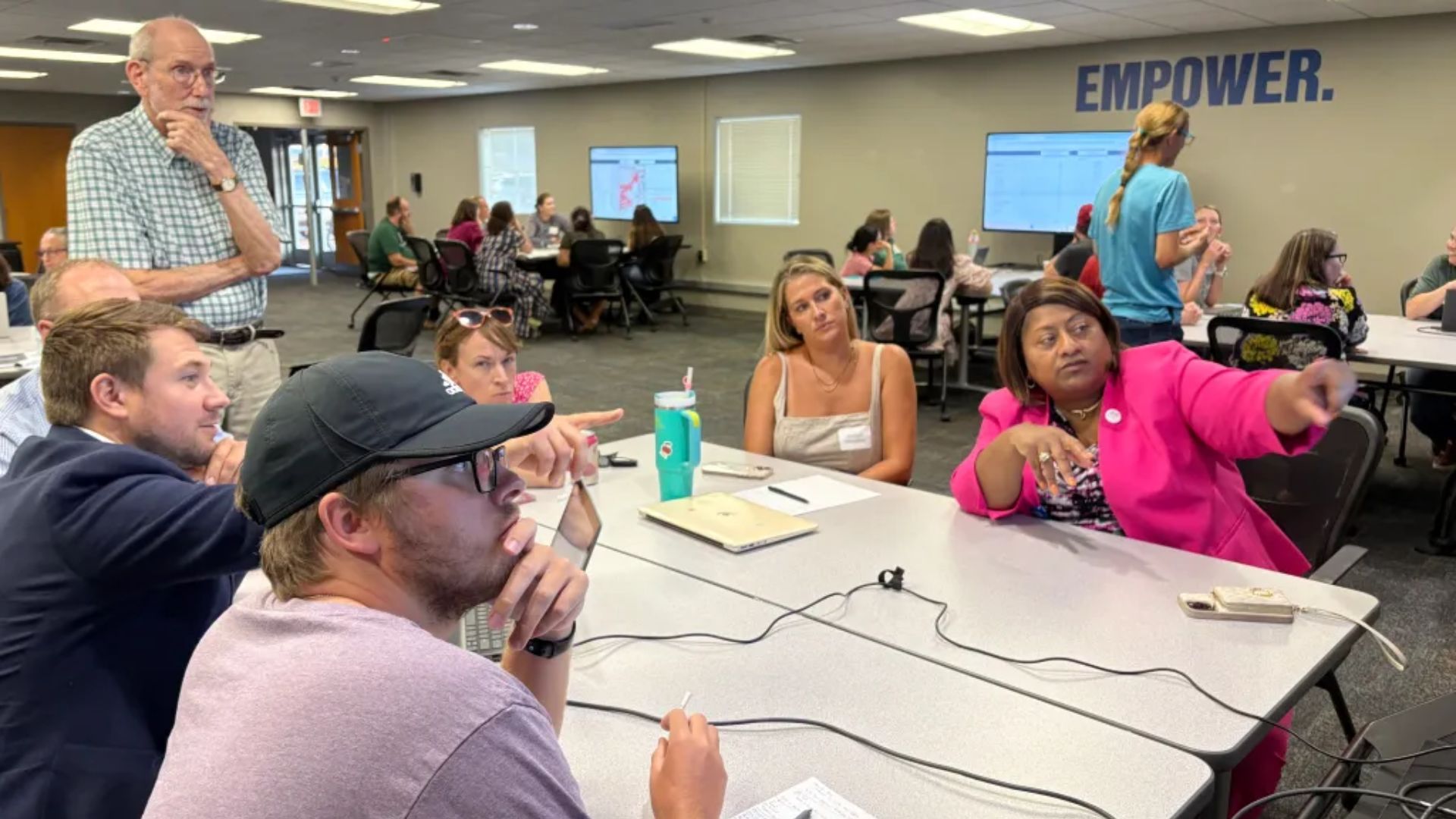Monroe County, Indiana – The Monroe County Community School Corporation’s (MCCSC) Redistricting Study Commission continues to move forward in its work, gathering data and tools that could guide future decisions about school boundaries. On Wednesday, September 17, the 92-member commission convened for its sixth meeting, focusing heavily on how census and county data could be used to better understand enrollment patterns and community demographics.
Dr. Blaine Garman-McClaine of MCCSC explained that one of the key priorities raised by commission members in previous meetings was understanding how local data could inform redistricting analysis. To help advance that goal, the group was introduced to Dr. John Baeten, GIS Coordinator for the Monroe County Surveyor’s Office and also a commission member.
Dr. Baeten presented a public data dashboard designed for Monroe County residents and policymakers. The dashboard brings together a range of publicly available data sources, including U.S. Census information from the American Community Survey, county assessor data, and current MCCSC attendance zones. According to Baeten, the tool was built to be accessible for anyone wishing to explore patterns in the county.
The dashboard contains two main interactive maps. One allows users to view Monroe County survey data organized by MCCSC attendance zones, while the other enables exploration of U.S. Census data by Census Tracts, such as median household income or demographic characteristics. These maps provide a visual way to examine complex data that might otherwise be difficult to interpret.
However, Baeten also pointed out a key limitation. Census Tracts, the units used in national demographic reporting, do not align neatly with MCCSC’s school attendance zones. That means the dashboard cannot provide reports that directly connect census data to individual schools or their boundaries. Despite this limitation, commission members spent the remainder of the session exploring the tool, gaining familiarity with how it could be applied in the next stages of the study.
Looking ahead, the commission will begin detailed work on example redistricting scenarios. MCCSC plans to collaborate with Dr. Baeten to incorporate both Monroe County assessor data and U.S. Census Block data into the analysis. Unlike Census Tracts, Census Blocks are smaller and can be paired more closely with school boundaries. This will allow for more precise modeling of how changes in attendance zones might affect schools across the district.
Dr. Tim Dowling, who is leading the Redistricting Study, emphasized that this next step will focus on balancing socioeconomic factors across schools while also considering practical issues such as transportation and building capacity. Beginning in October and continuing through December 2025, the commission will examine nine example scenarios, covering both elementary and secondary schools.
The purpose of studying multiple scenarios is to provide the MCCSC Board of School Trustees with a clear analysis of potential outcomes. These scenarios will not serve as recommendations but as case studies that highlight possible costs, transportation changes, and student impacts if redistricting were to move forward in the future.
As laid out in the project charter, the commission’s role is limited to data analysis rather than decision-making. The ultimate goal is to produce a comprehensive informational report by spring 2026. This final report will summarize the commission’s work to date, provide peer-reviewed research insights, and include the analysis of the nine example scenarios.
The report is intended to strengthen the School Board’s understanding of what redistricting might entail by drawing on enrollment data, demographic patterns, building utilization, and cost projections. Armed with this information, trustees will be better positioned to evaluate whether redistricting is necessary, what its potential impacts could be, and how different approaches might balance the needs of students and families across the district.
For now, the commission remains focused on gathering and interpreting data, ensuring that its work builds a strong foundation for any decisions the School Board may eventually consider. With community members, educators, and local experts all contributing to the process, the study reflects both the complexity and the importance of planning for the future of Monroe County’s schools.









